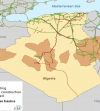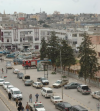Macroeconomic indicators show that Lebanon is experiencing an extremely serious crisis. GDP was reduced from $52 billion in 2019 to $22 billion in 2021. The unemployment rate would have increased from 11% in 2018 to 30% in 2021.
The current account deficit remains high at -12.8% of GDP in 2022 and the market exchange rate has deteriorated exponentially (40,000 LBP for $1 in November 2022 against 1,507.5 before the crisis).
This macroeconomic situation should theoretically result in a total shutdown of activity in Lebanon and a very sharp contraction in consumption, especially since public services are only partially functioning and in a very degraded manner.
However, a more microeconomic approach seems to show that the activity continues. The Purchasing Managers’ Index PMI stood at 49.9 in July 2022, its highest level since June 2013.
The activity of the port of Beirut increased by +6.4% over the first seven months of 2022 and the traffic of Beirut airport by +55% year-on-year over the first nine months of 2022.
Imports over the first seven months of the year amount to $11 billion, on such a basis, the amount for 2022 could reach $19 billion, i.e. a level equivalent to the pre-crisis period.
The possible explanations at this stage are hypotheses that could illustrate the phenomenon of adaptation of the Lebanese economy:
– the maintenance of transfers in foreign currency, i.e. 19.8% of GDP in 2020, which maintains consumption.
– seasonal peaks in service activities in protected sectors such as tourism, hotels and restaurants
– the development of the informal sector
– reserves and hoarding behavior of economic agents
Moreover, the shutdown of the banking system and the loss of credibility of the Lebanese pound should have paralyzed the Lebanese economy. The continuity of the system of payments and supply of the market with liquidity was made possible by a double effect of development of a cash economy and a progressive dollarization of the main sectors of activity.
Today the quantity of dollars in circulation would be in a range between $10 and $15 billion, i.e. between 50% and 75% of Lebanese GDP, which represents a de facto partial dollarization.
In the absence of an IMF program, this situation could become structural, but it places the Lebanese economy in a precarious and sub-optimal balance:
– The State and public services would continue to weaken
– The dependence vis-à-vis the outside world and the solidarity mechanisms of the diaspora are based on the emigration of the most qualified active population
– Productive investment is discouraged and public infrastructure investment is reduced to nil
Ultimately, Lebanon is moving towards an economic model of consumption of everyday goods, in a situation of under-investment and therefore spending is allowed mainly through external or unofficial liquidity supply channels.
Source : Economic Service French Embassy in Lebanon











Réagissez à cet article